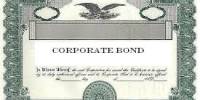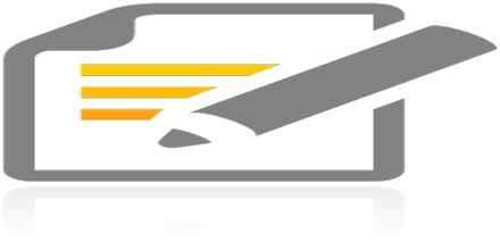Trend of financial system in Bangladesh
Theoretical Framework
Inauguration of Trend Financial System in Bangladesh is the most significant advancement for capital market in last several years.
Commercial Banks mediate or stand between ultimate borrowers and ultimate lenders and help transfer of funds from one to another. A commercial bank does this by borrowing funds from the savers and makes loans to borrowers. The value of Bank’s intermediation services is reflected by the difference of the interest rate received by the Bank from the borrower and that paid out to the depositors. This difference is the gross earnings of a commercial bank. From gross earnings the cost of doing business are subtracted. The cost of bank includes bank’s employee payroll, cost of relevant equipment, materials and facilities etc. What remains after paying taxes is the bank’s profit, which is distributed among the shareholders? The modern bank plays the following roles:
- The intermediation role
- The payments role
- The guarantor role
- The risk management role
- The savings/investment advisor role
- The safe keeping/certification of value role
- The agency role
- The policy role
- The intermediation role:
Transforming savings received primarily from households into credit (loans) for business firms and others in order to make investments in new buildings, equipment, and other goods.
- The payments role:
Carrying out payments for goods and services on behalf of their customers (such as by issuing and clearing checks, wiring funds, providing a conduit for electronic-payments, and dispensing currency and coin).
- The guarantor role:
Standing behind their customers to pay off customer debts when those
Customers are unable to pay (such as by issuing letters of credit).
- The risk management role:
Bank is assisting customers in preparing financially for the risk of loss to property.
- The savings/investment advisor role:
Aiding customers in fulfilling their long-range goals for a better life by building, managing, and protecting savings,
- The safekeeping/certification of value role:
Safeguarding a customer’s valuables and appraising and certifying their true market value.
- The agency role:
Acting on behalf of customers to manage and protect their property or issue and redeem their securities (usually provided through the bank’s trust department).
- The policy role:
Serving as a conduit for government policy in attempting to regulate the growth of the economy and pursue social goals.
9. Currency Exchange:
- Bank trade one form of currency such as takes for another dollars in return for a service fee
- Helps Tourists. International business.
- Give loans to local merchants, businessmen.
- This is a source of fund to facilitate loans
- Saving deposits are interest-bearing funds left with banks for a period of weeks, months, or years.
- Usually handled by a bank’s safety deposit department, (lockers) which keeps the customers’ valuable property under lock and key until customer demands access to that property.
- Making Business Loan
- Offering Savings Deposits
- Safekeeping of Valuables
13. Supporting Government Activities With Credit:
- They have to purchase govt. securities and hands with a portion of (16%) any deposit they receive. Again, in case of inflation govt. may increase Bank Rate and therefore control credit generation.
- It permits depositors to write drafts in payment for goods and services that the bank has to honor immediately.
- One of the most important services. Improves the payment process.
- Make business transactions easier, faster and safer.
- Offering Current Account: (Checking A/c, Demand Deposit)
15.Granting Consumer Loans:
- Electronics, Car, Marriage/wedding, Education loan, House building loan.
16.Financial Advising:
Banks give financial advice to their customers particularly when it comes to the use of credit and the saving or investment of funds.
17.Cash Management Services:
In which bank agrees to handle cash collection (ex: phone bill) and disbursements for a business firm and to invest any temporary cash surpluses in short term interest bearing securities and loans until the cash are needed to pay bills.
18.Offering Equipment leasing:
Banks offer their business customers the option to purchase needed equipment through a lease arrangement in which the bank buys the equipment and rents it to the customer. Customers have to make lease payment that will eventually cover the full cost of purchasing the rented equipment and to be responsible for any repairs and taxes incurred.
19.Making Venture Capital Loans:
- Banks have become active in financing the start up costs of new compares particularly in high tech industries (ex: bio-chemical research, cancer research genetic engineering).
- There is an added risk involved here.
Banking during the Pakistan Period
In 1947, there was only one modern bank named Australasia. Habib Bank that was established in 1941 in Bombay shifted its head office from Bombay to Karachi immediately after the emergence of Pakistan. Muslim Commercial Bank and Bank of Bhaowalpur were established in 1948. Since then, many banks were being established in Pakistan gradually. Entrepreneurs of those banks were either from West Pakistan or immigrant from India. In 1959, Eastern Mercantile Bank was established in the East Pakistan, which was a joint venture of Bengalis and non-Bengalis with its head office in Chittagong. That was the first schedule Bank in East Pakistan. State Bank of Pakistan contributed to the capital of the bank. At the beginning of the 1970s, one of the influential director Mr. Aga Hasan Abedi quitted himself from Habib Bank and established United Bank Limited. He started offensive banking from the very beginning. Issues and wards of East Pakistani bureaucrats, political leaders, landlords and influential persons were being recruited in the bank. He gave priority to the East Pakistan and opened new branches in rural areas. In the face of stiff competition, other banks including “Habib Bank” and “Muslim Commercial Bank” started to open their branches in the rural areas. All of those events did not appease dissatisfaction accumulated in the mind of the people of East Pakistan. Those banks based on West Pakistan did not appoint Bengalis as manager or general manager whereas to appoint as a managing director was beyond of thinking. Bengalis were being used for collecting deposits. They were not trained to work in credit and foreign Exchange division. Necessity of a bank of Bengali community emerged amid those obscured dissatisfaction. In that perspective Eastern Banking Corporation was created on the 28th January 1965 with wholly Bengali ownership. Eastern Banking Corporation started its activities as a scheduled bank on the 22nd June, 1965. Paid up capital of the bank were 14 Lac and 21 thousands taka only at the time of inception.
During the liberation war, there were only two banks owned by Bengalis. One was Eastern Banking Corporation and another was Eastern Mercantile Bank. Those banks were comparatively small in size and wealth. Thirty percent deposits of Bangladesh were under control of the banks owned by Bengalis and seventy percent deposits were under control of Pakistani banks.
Banking after the emergence of Bangladesh
Five Indian banks were excluded from reconstruction and nationalization process. It is to mention that those five banks were inactive since 1965, as government had declared them as Enemy Property after the India-Pakistan war in 1965. Management of those banks lied on Deputy Custodian for the liquidation process.
Three foreign banks were excluded from reconstruction and nationalization process. Those were the followings:
- National and Grindleys Bank.
- Chartered Bank, and
- American Express International Banking Corporation.
Out of the rest fourteen banks, two were financial institution and the other twelve were banks. Two financial institutions were reconstructed and converted as below:
Pre-Liberation Post-liberation
1. Industrial Development Bank of Pakistan Bangladesh Shilpa Bank
2. Agricultural Development Bank of Pakistan Bangladesh Krishi Bank
Out of twelve commercial banks, only two belonged to Bengali ownership and the rest ten belonged to non-Bengali Pakistani ownership. Those twelve banks were reconstructed and nationalized as follows:
| Pre-nationalization | Nationalized Bank |
| Sonali Bank |
| Agrani Bank |
| Janata Bank |
| Rupali Bank |
| 1. Eastern Mercantile Bank Ltd | Pubali Bank |
| 1. Eastern Banking Corporation | Uttara Bank |
















